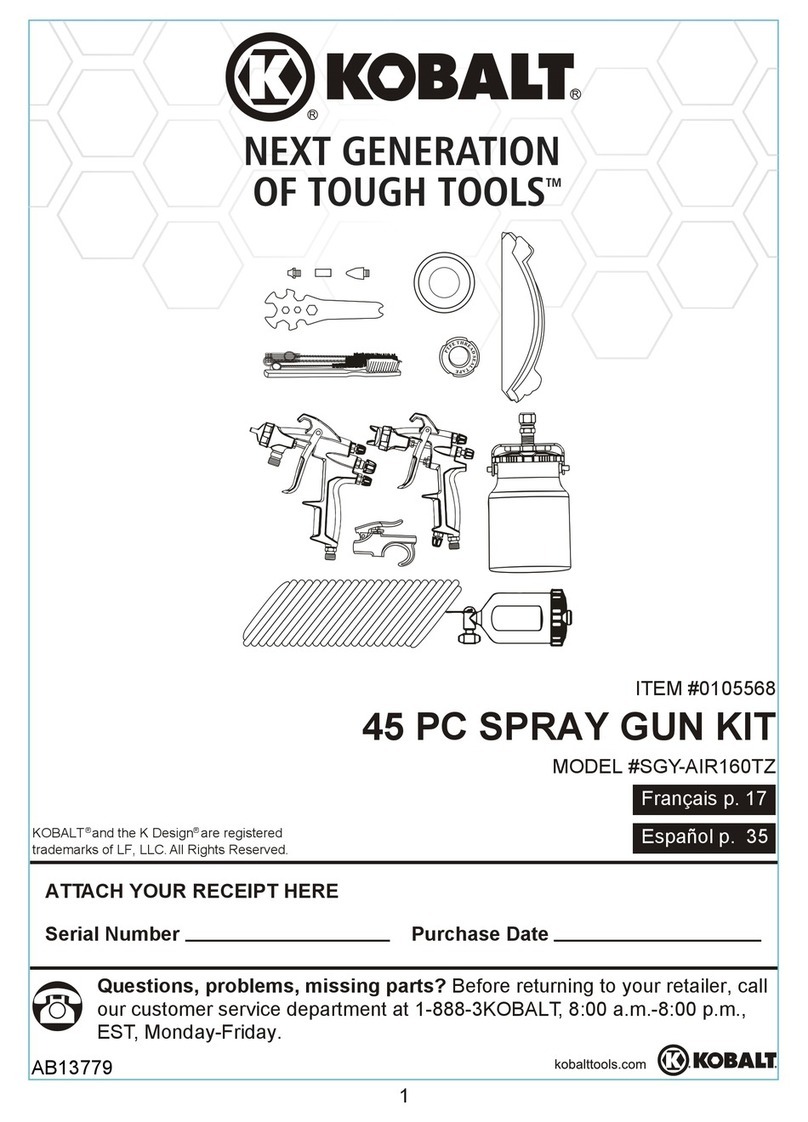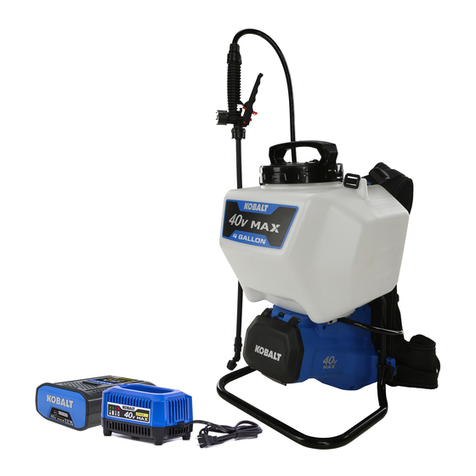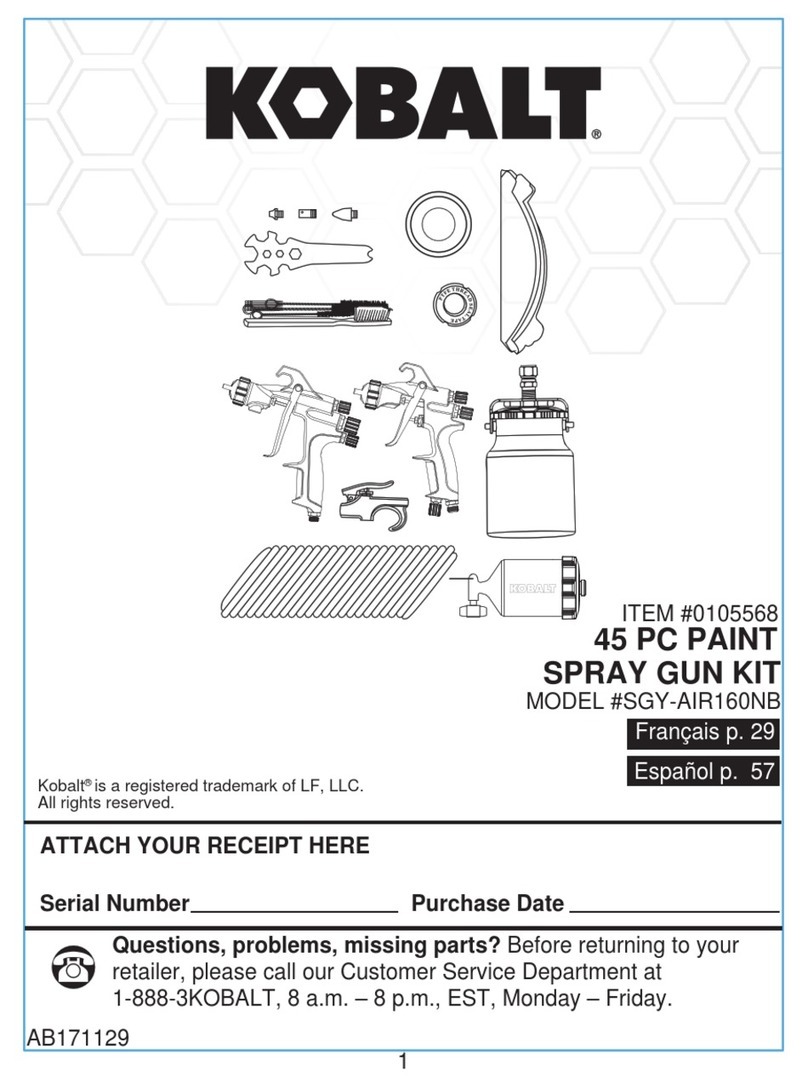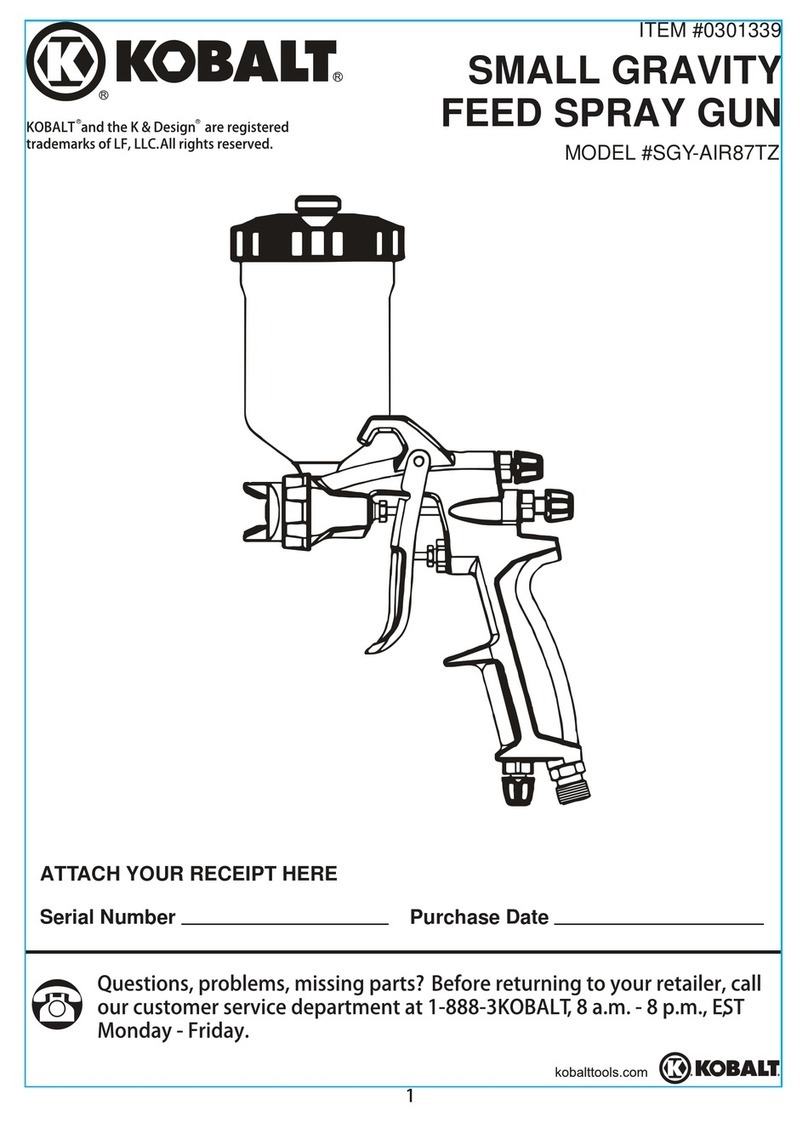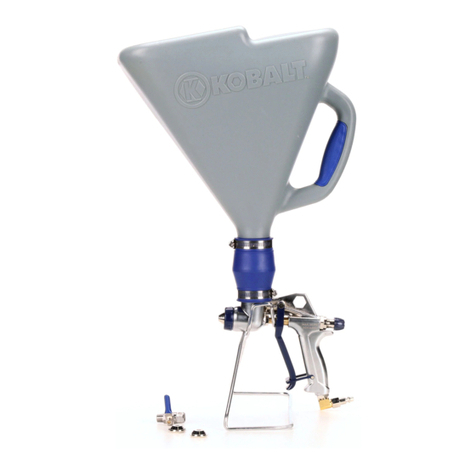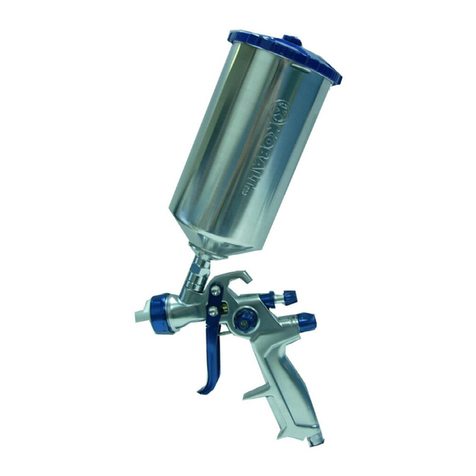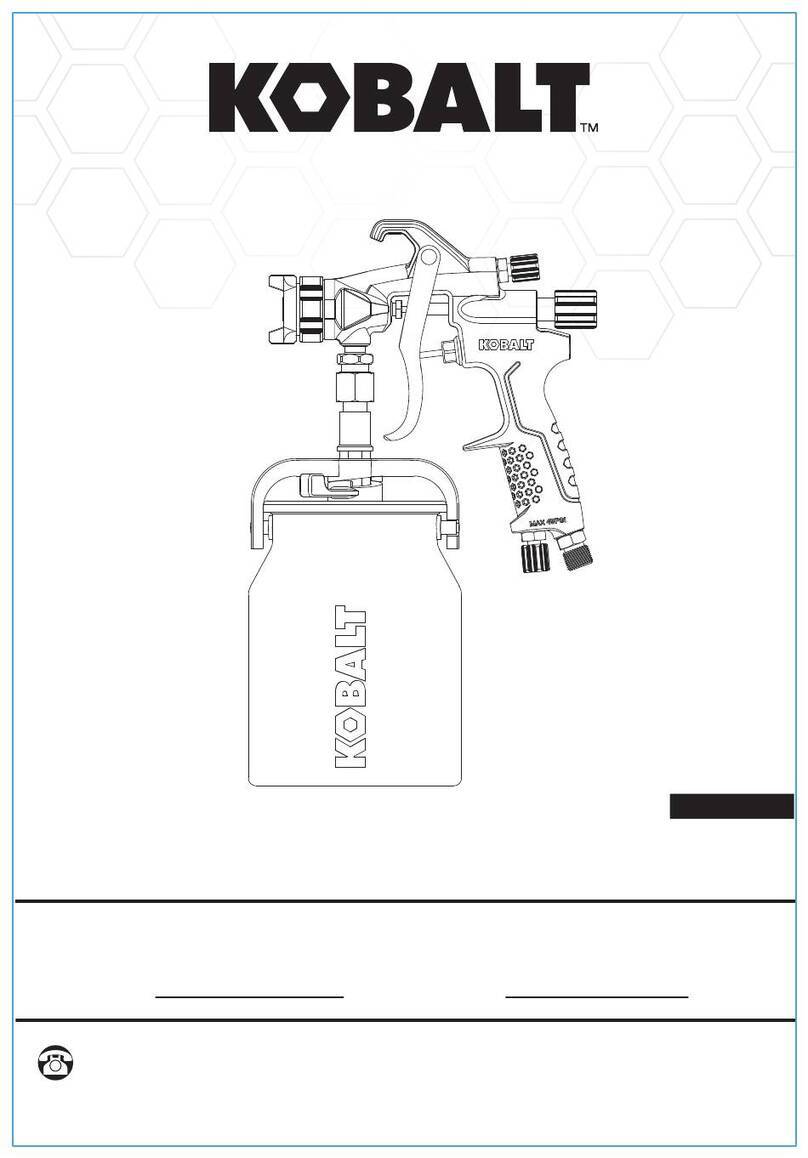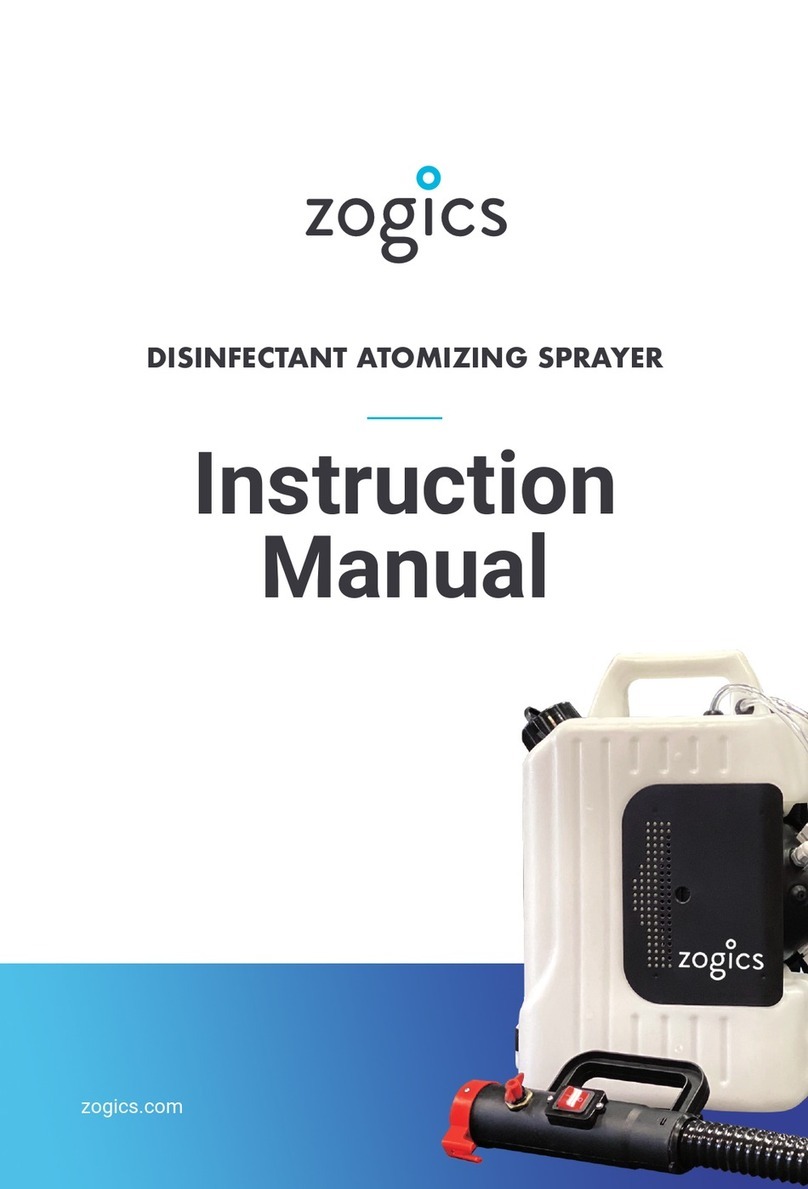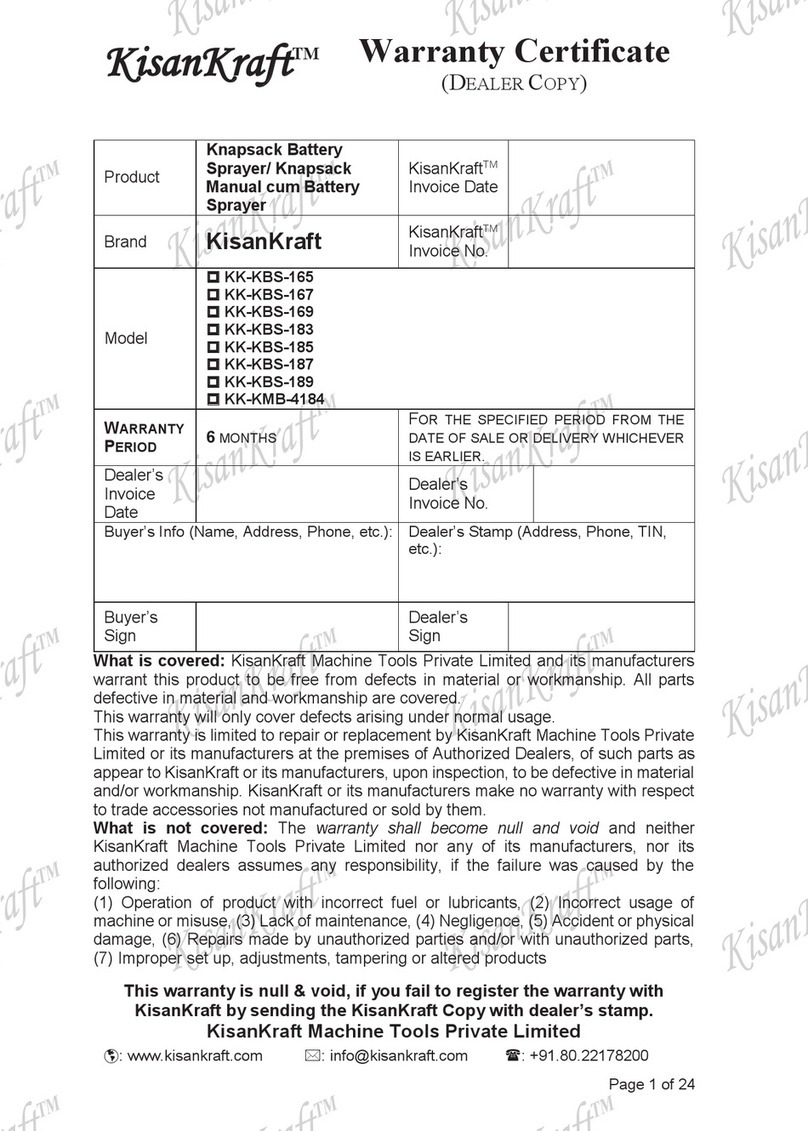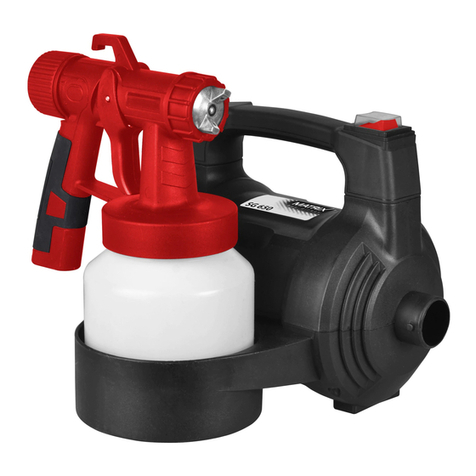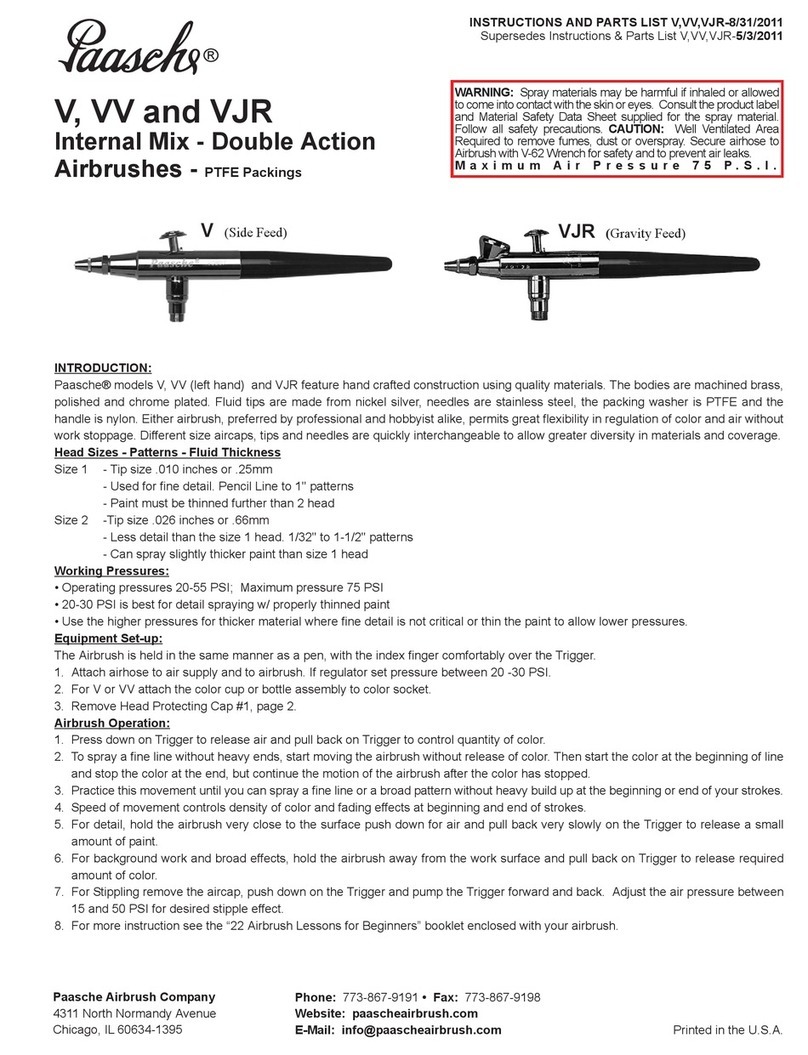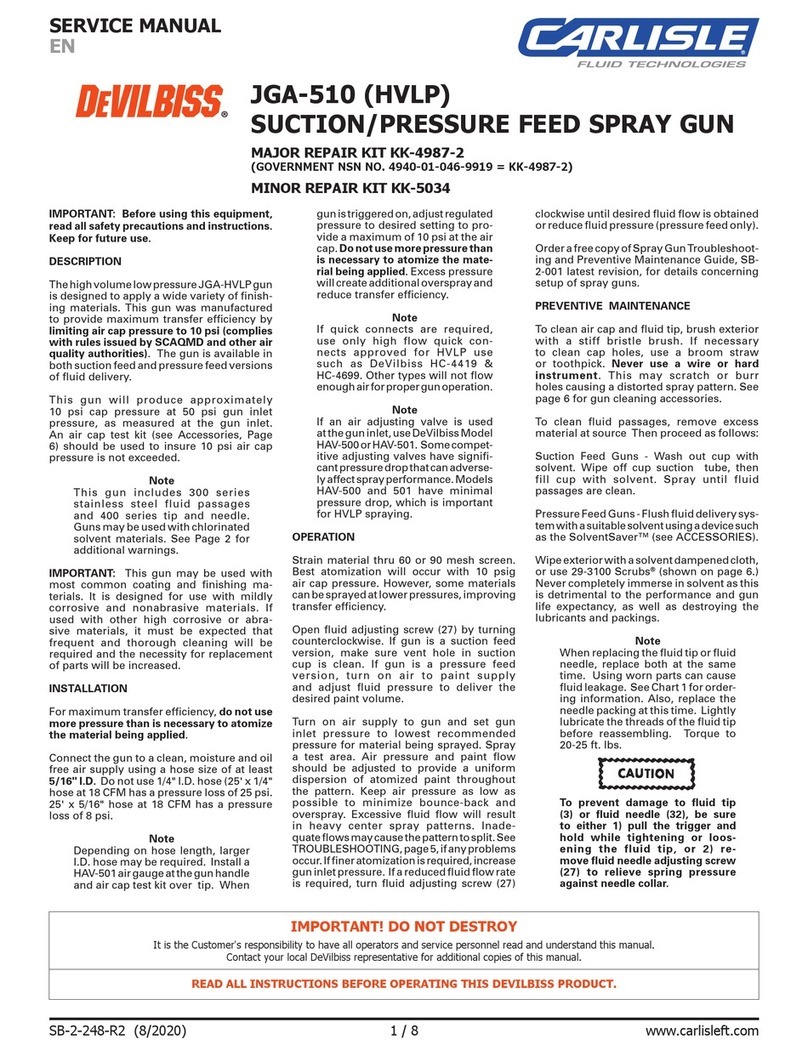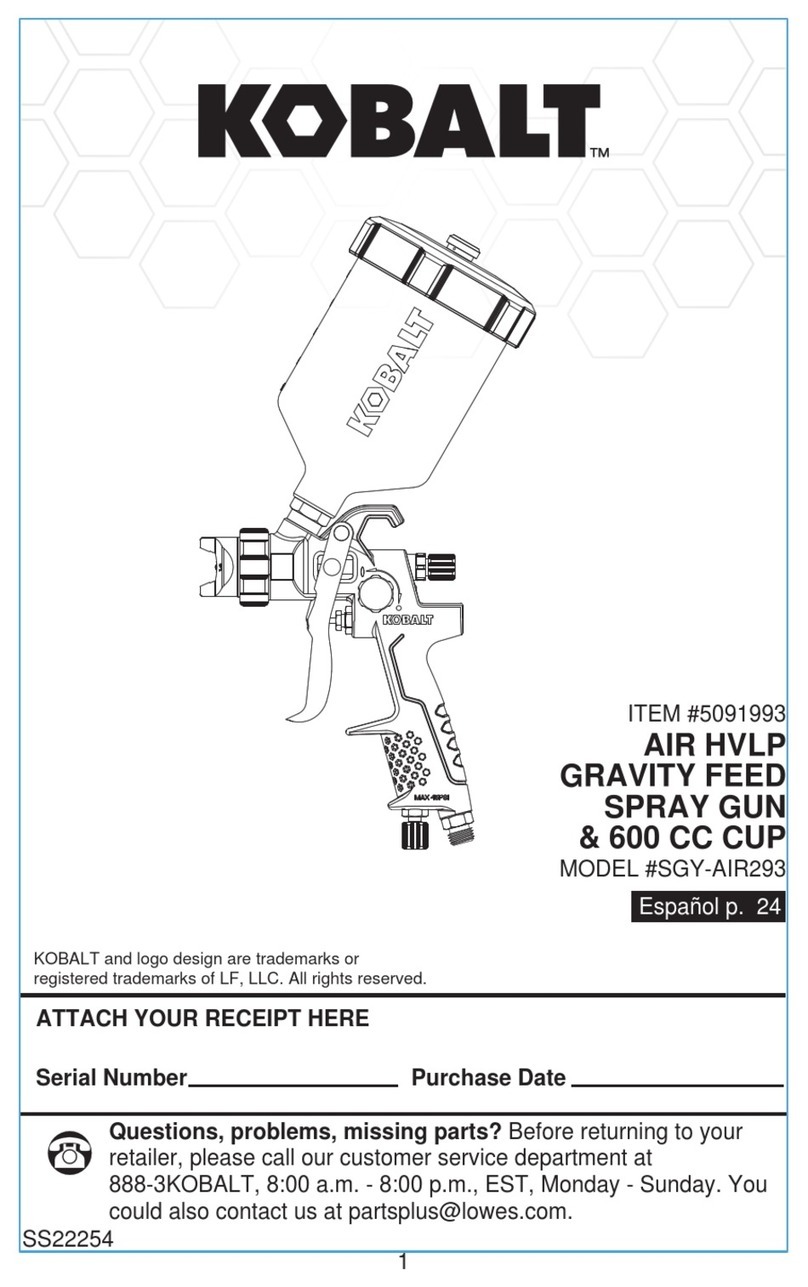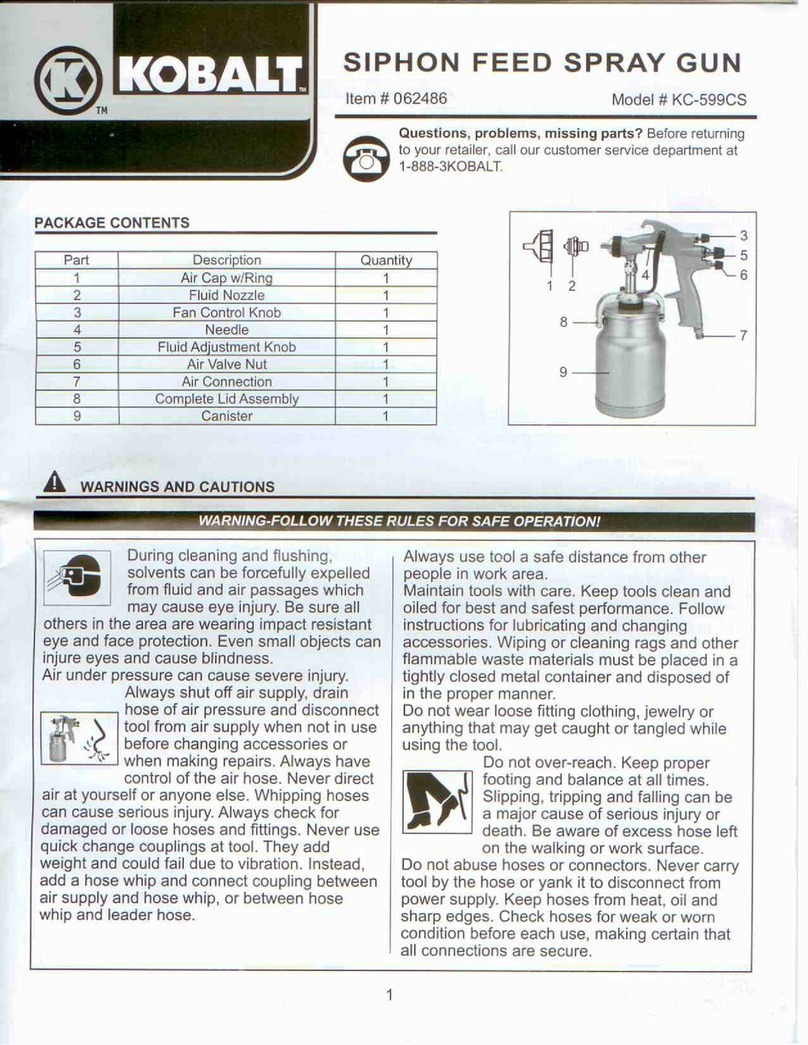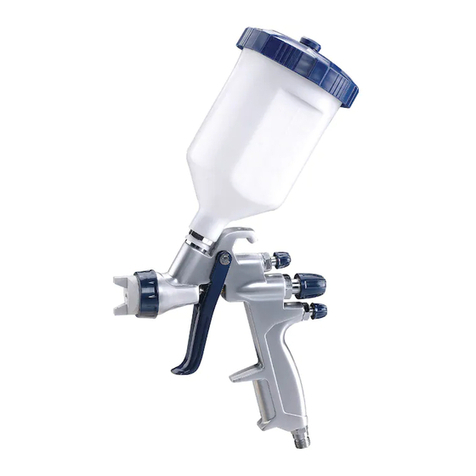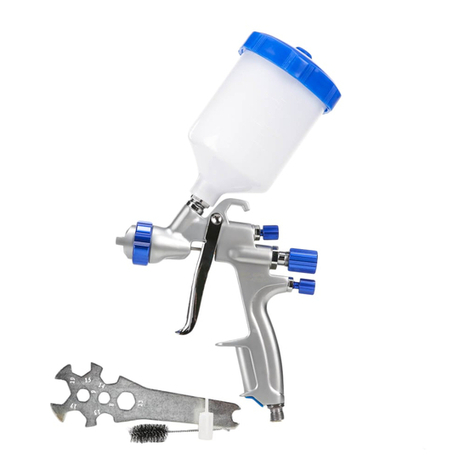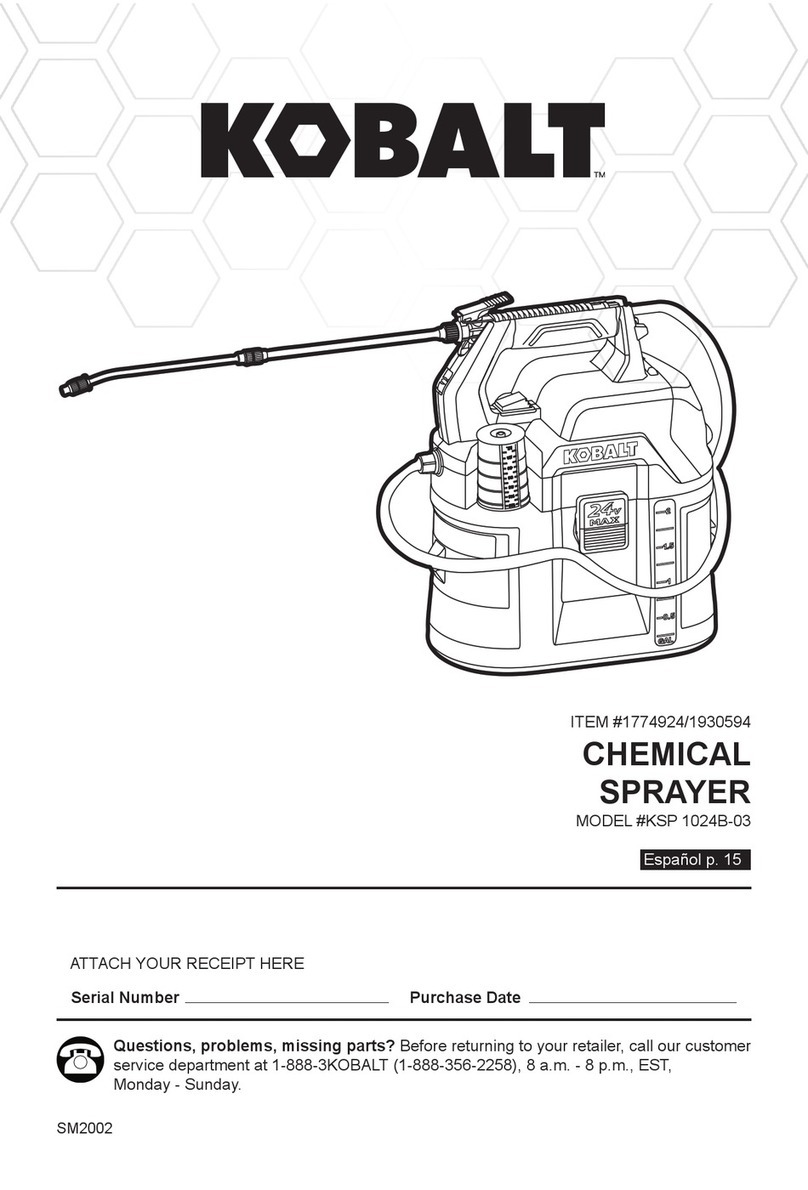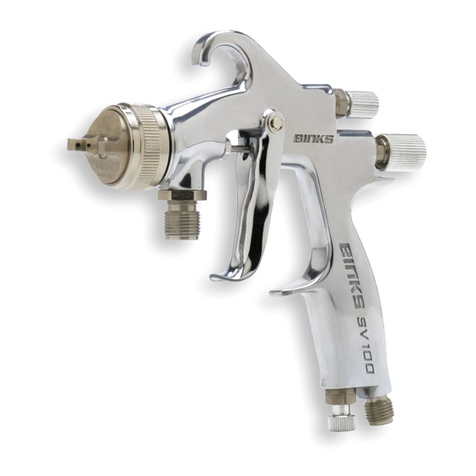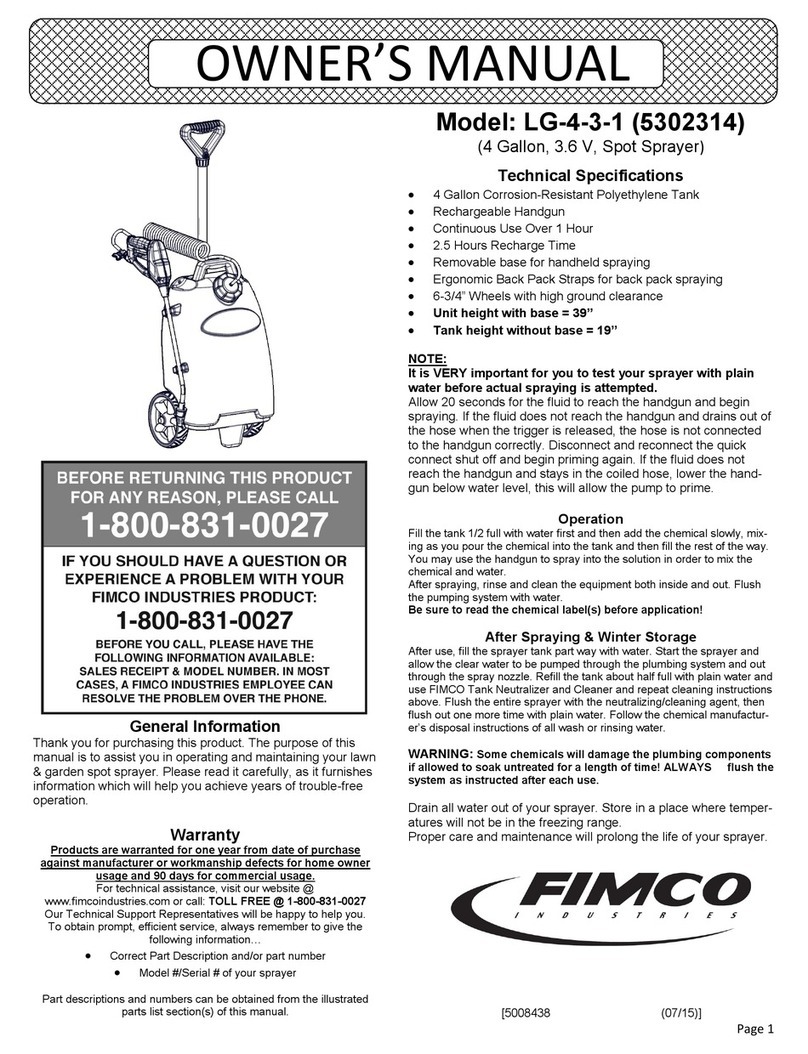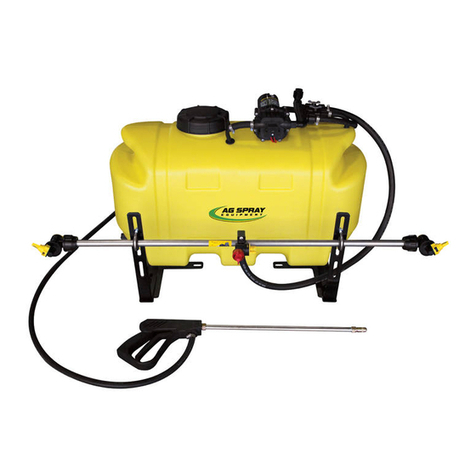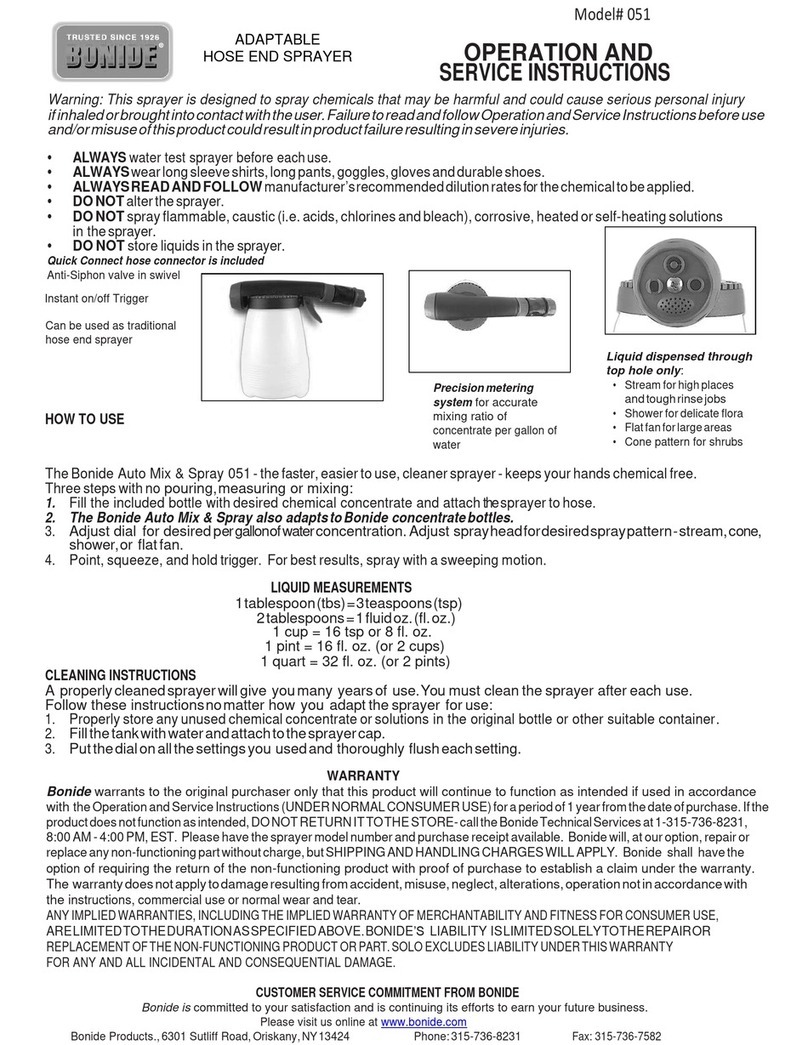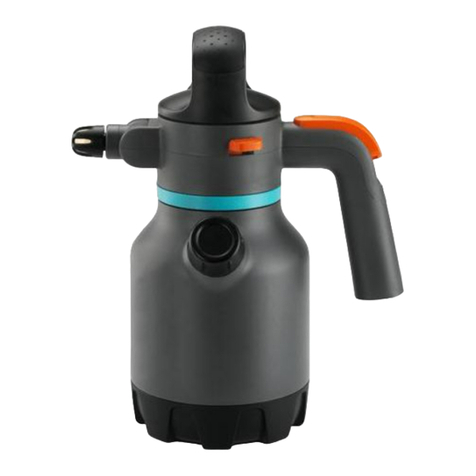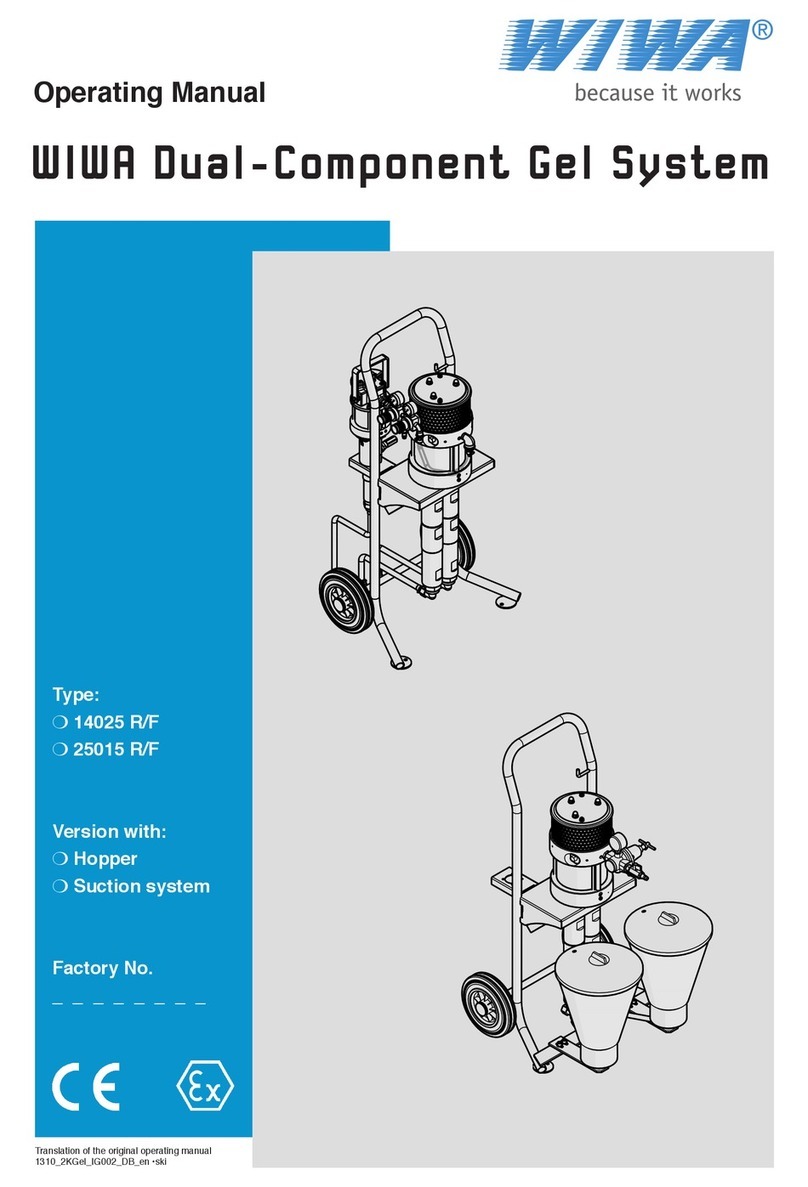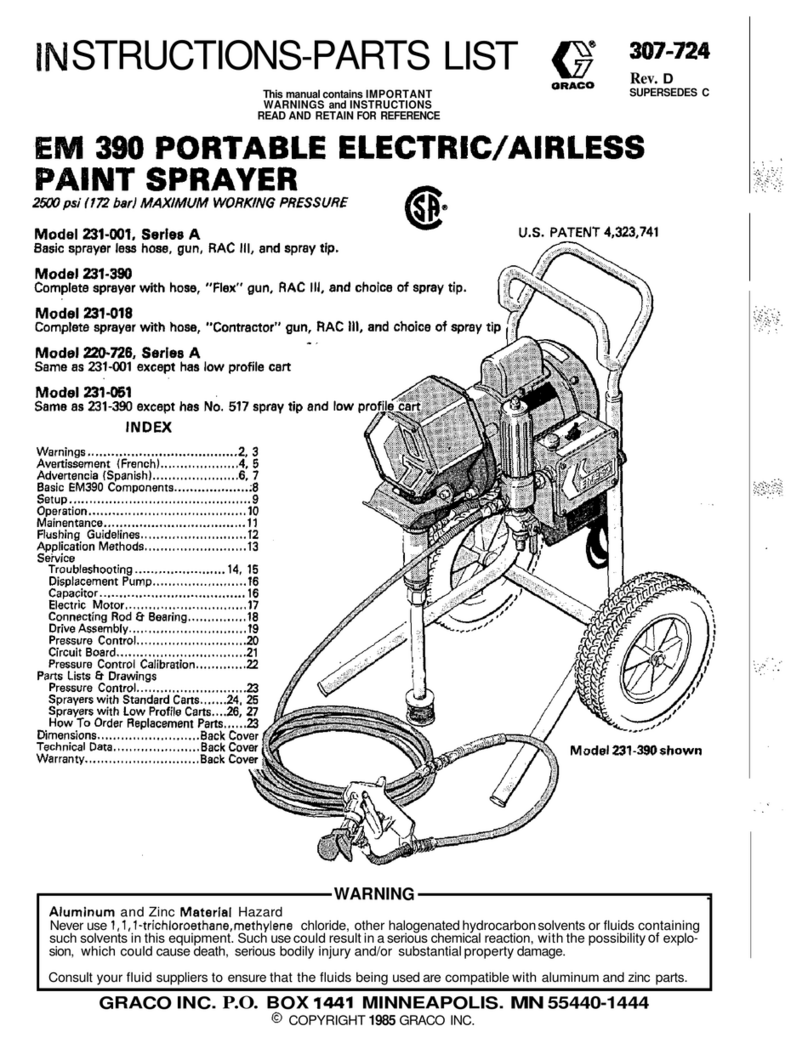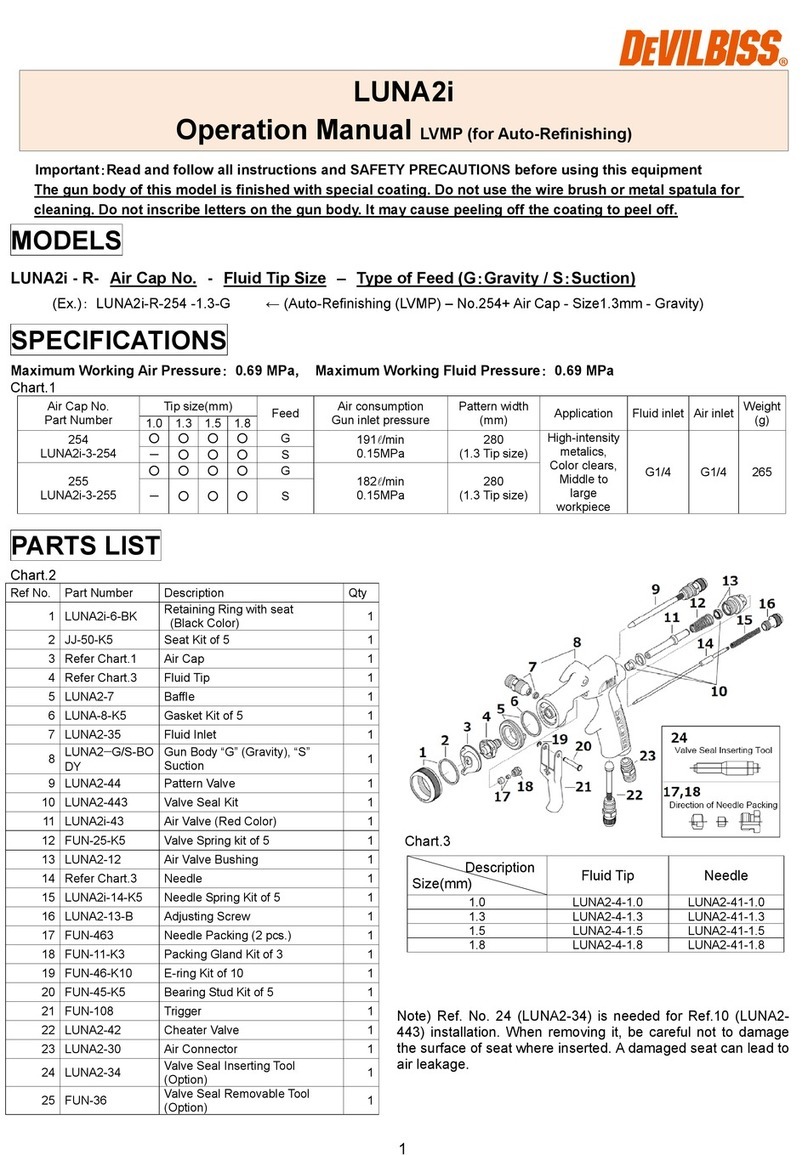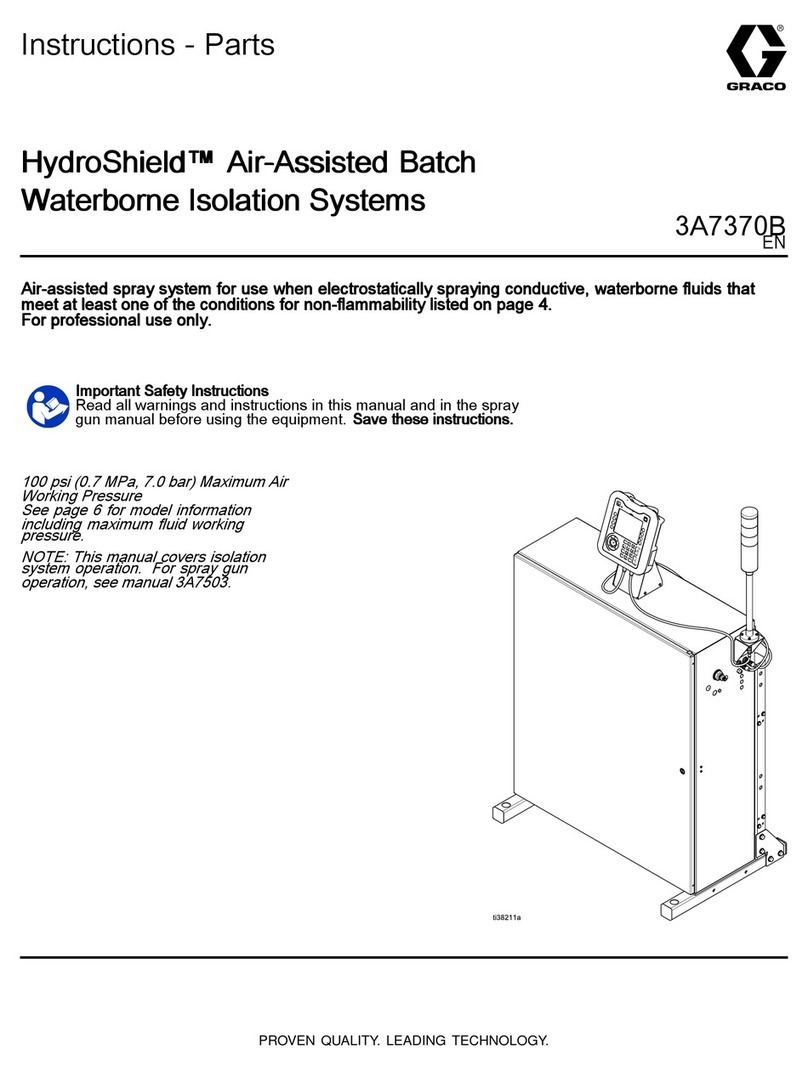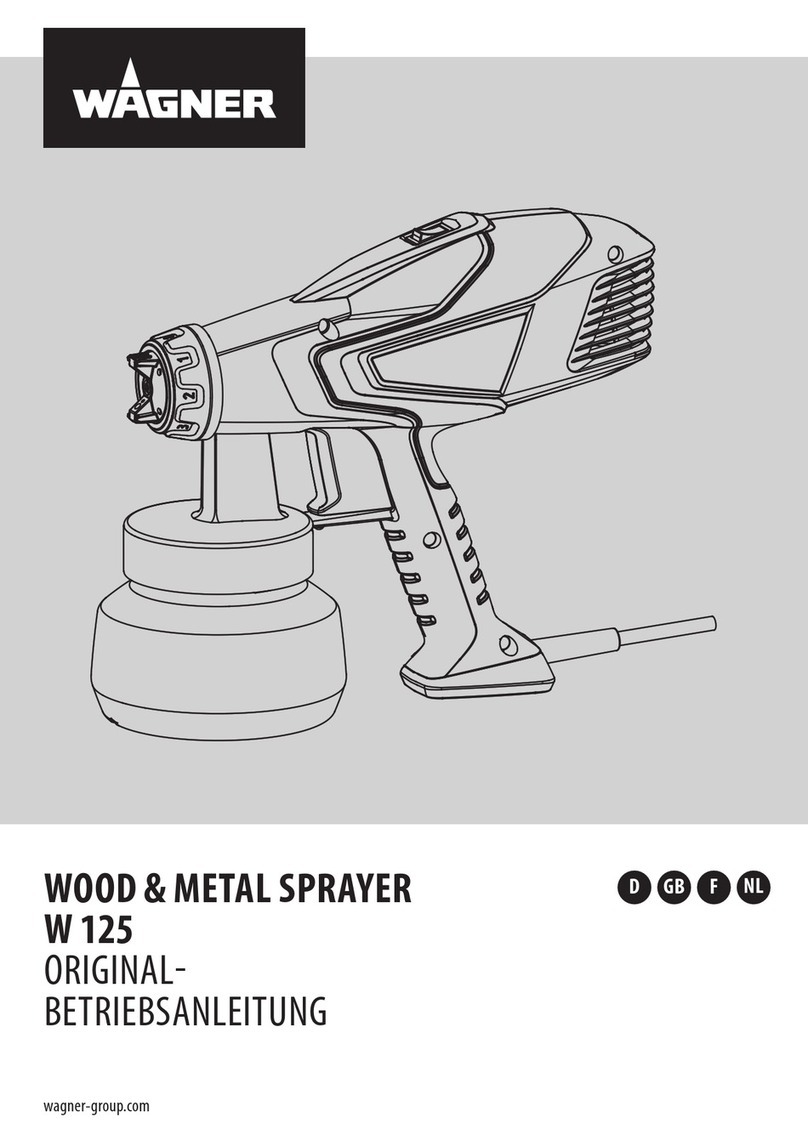3
SAFETY INFORMATION
Please read and understand this entire manual before attempting to assemble, operate
or install the product. If you have any questions regarding the product, please call
customer service at 1-888-3KOBALT, 8:00 a.m.-8:00 p.m., EST, Monday-Friday.
Follow all local electrical and safety codes as well as the United States National
Electrical Codes (NEC) and Occupational Safety and Health Act (OSHA).
When spraying and cleaning, always follow the manual and safety precautions
provided by the material manufacturer (Refer to Material Safety Data Sheets --- MSDS).
Do not use this product with other people, children or pets in the working area.
Always work in a clean environment. To avoid any injury or damage to workpiece,
do not aim the spray gun at any dust or debris.
Always use a pressure regulator on the air supply to the spray gun.
WARNING
No not operate tool if damaged during shipping, handling or use. Damage could
result in bursting and cause injury and/or property damage.
Use a face mask/respirator and proctective clothing when spraying. Always spray in
a well ventilated area to prevent health and fire hazards. Refer to Material Safety
Data Sheets (MSDS) of spray material for details.
Never spray flammable materials in vicinity of open flame or near ignition sources.
Never store flammable liquids or gases near air compressor.
Do not spray acids, corrosive materials, toxic chemicals, fertilizers or pesticides.
Using these materials could result in death or serious injury.
Never aim or spray at yourself or anyone else, which could result in serious injury.
If eyes or face come into direct contact with sprayed material, contact your local
doctor and or emergency room for immediate help.
Do not use pressure exceeding the operating pressure of any of the parts (hoses,
fittings, etc.) in the painting system.
Keep proper footing at all times, do not overreach, as slipping, tripping, and or falling
can be a major cause of serious injury and or death. Be aware of excess hose left in
the working area or work surface. Do not abuse hoses or connectors. Never carry the
tool by hose or yank it to disconnect it from power supply. Keep hoses away from
heat, oil, and sharp edgess. Check hoses for weak or worn connections before each
use and make certain that all connections are secure.
Certain materials that can be used with this device if coming in direct contact with
skin may cause skin irritation. Read the label or materials sagety data sheet for the
materials you intent to find out which materials may cause skin irritation.
YOUR RISK FROM THESE EXPOSURES VARIES, DEPENDING ON HOW OFTEN
YOU DO THIS TYPE OR WORK. TO REDUCE YOUR EXPOSURE TO THESE
CHEMICALS, WORK IN A WELL VENTILATED AREA, AND WORK WITH
APPROVED SAFETY EQUIPMENTS, SUCH AS THOSE DUST MASKS THAT ARE
SPECIALLY DESIGNED TO FILTER OUT MICROSCOPIC PARTICLES.
DANGER
Never spray closer than 25 feet to the
air compressor. If possible, place
compressor in separate room.
CAUTION
Keep hose away from sharp objects.
Bursting air hose could result in personal
injury. Examine air hoses regularly and
replace them if damaged or broken.

